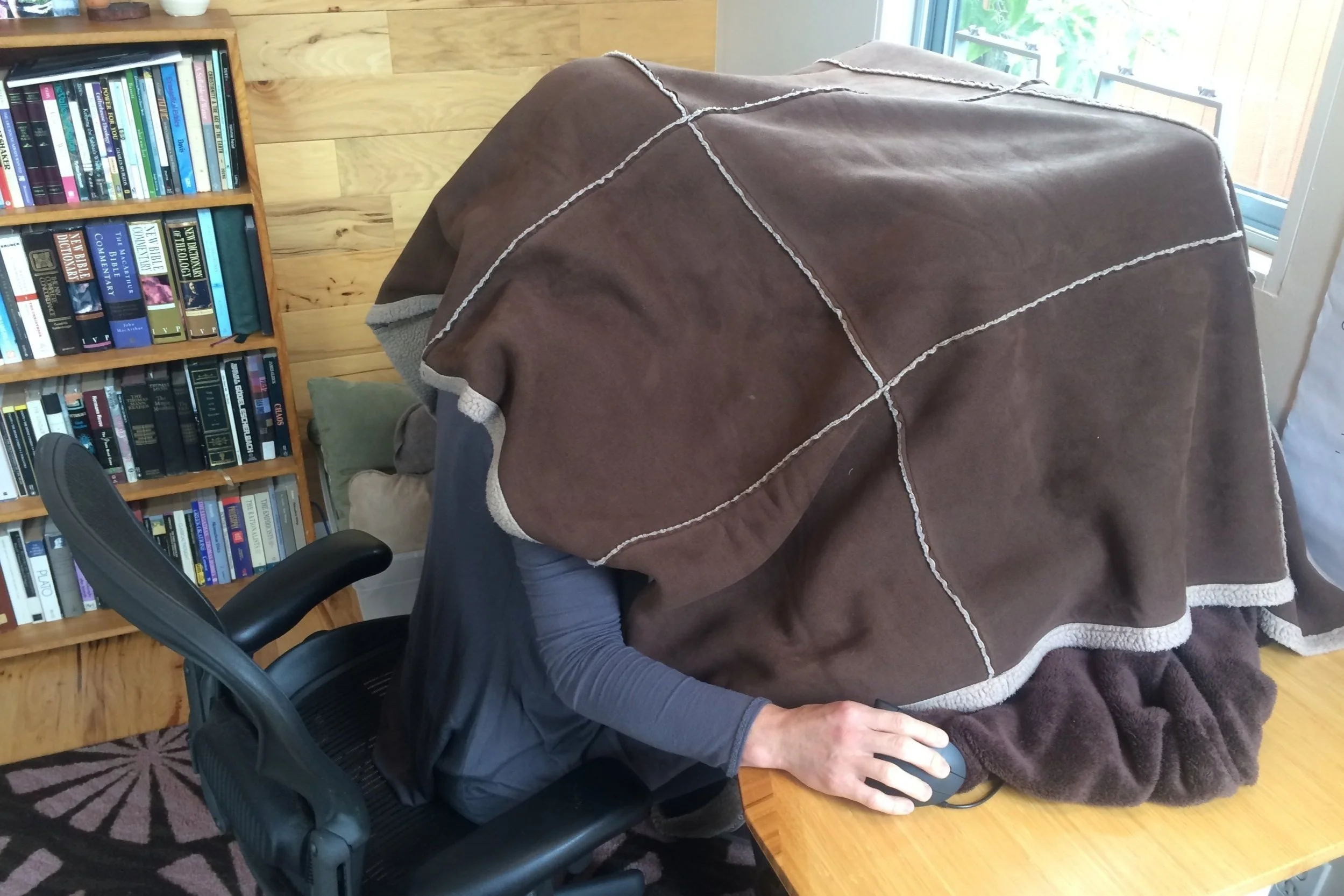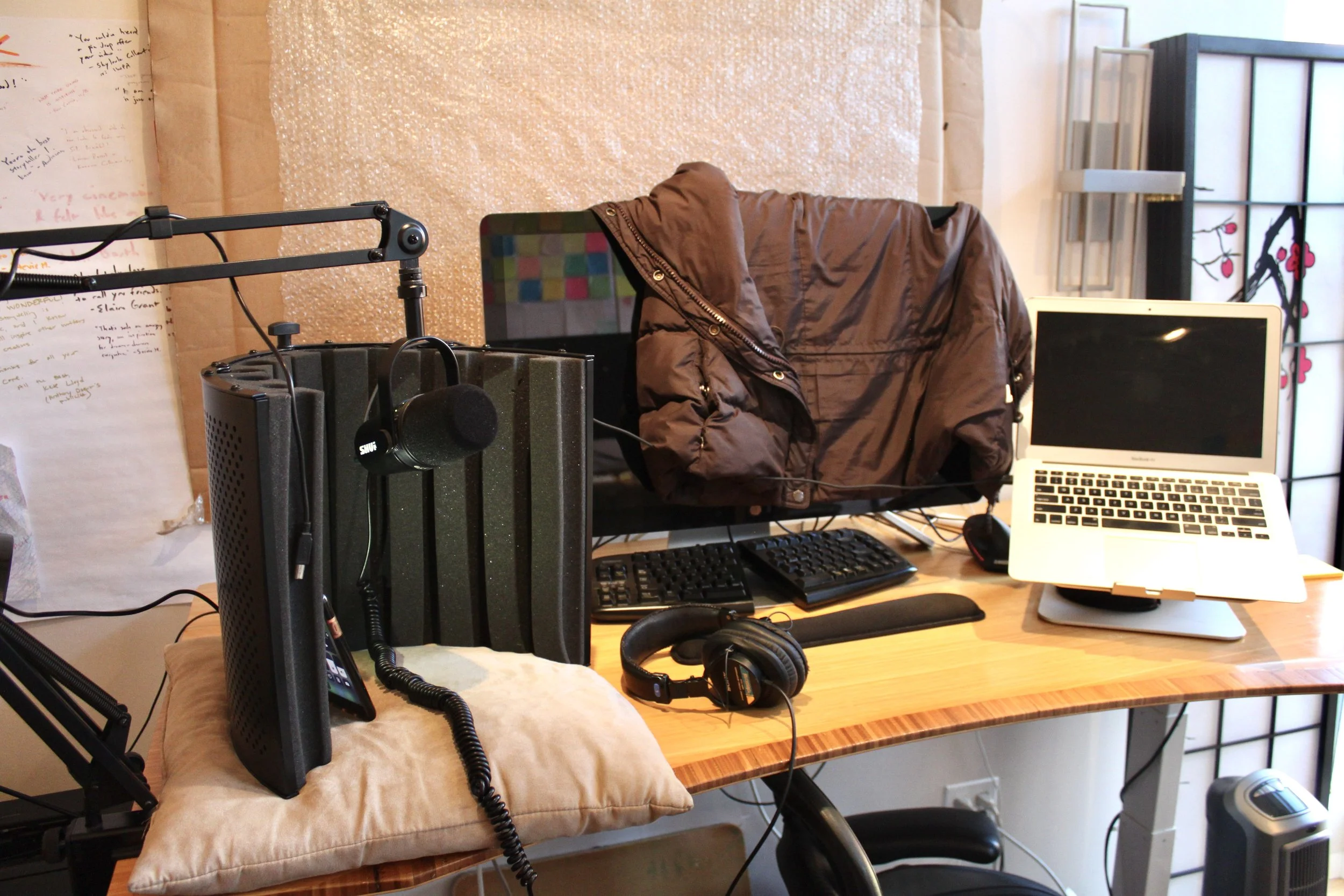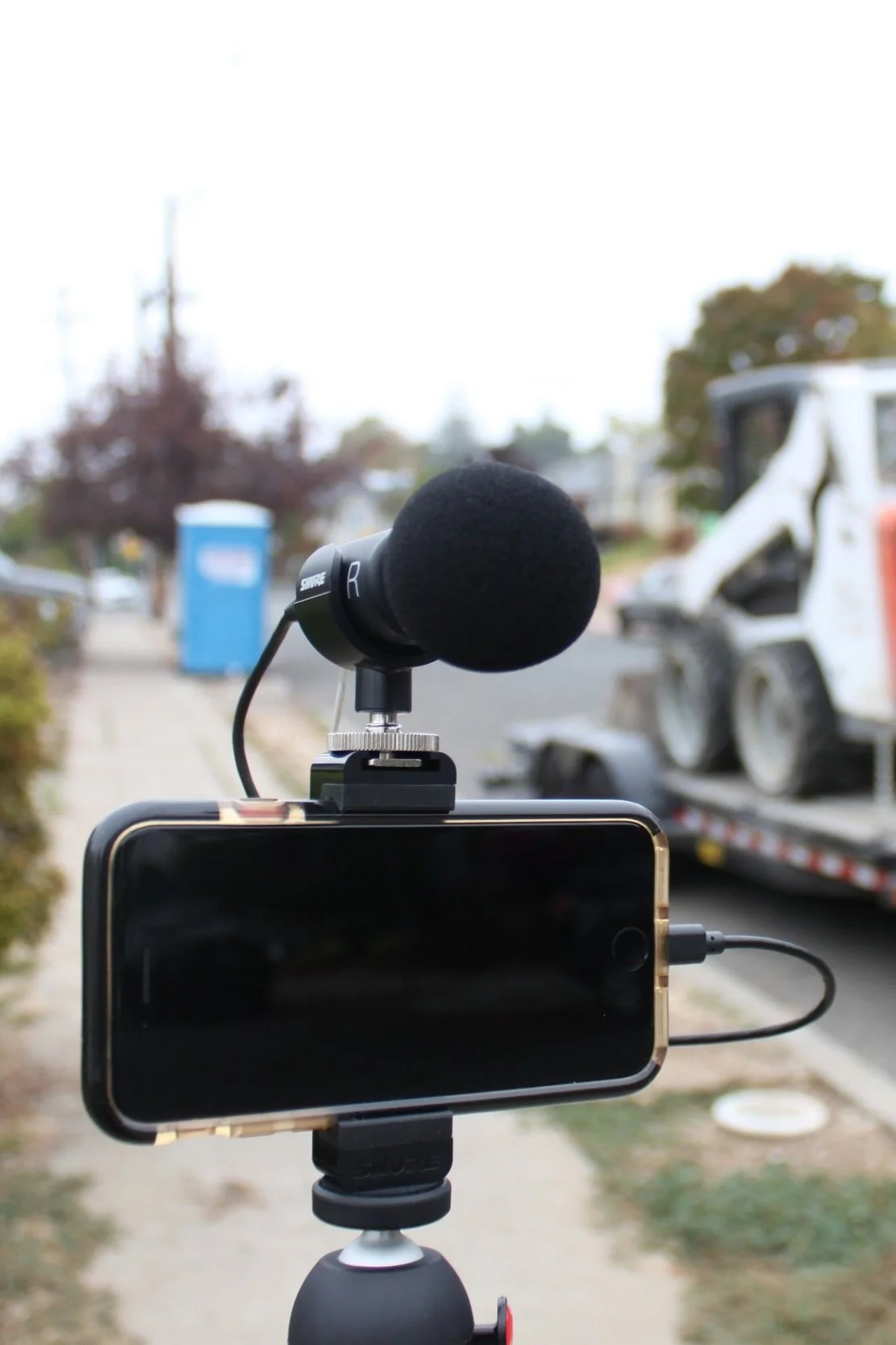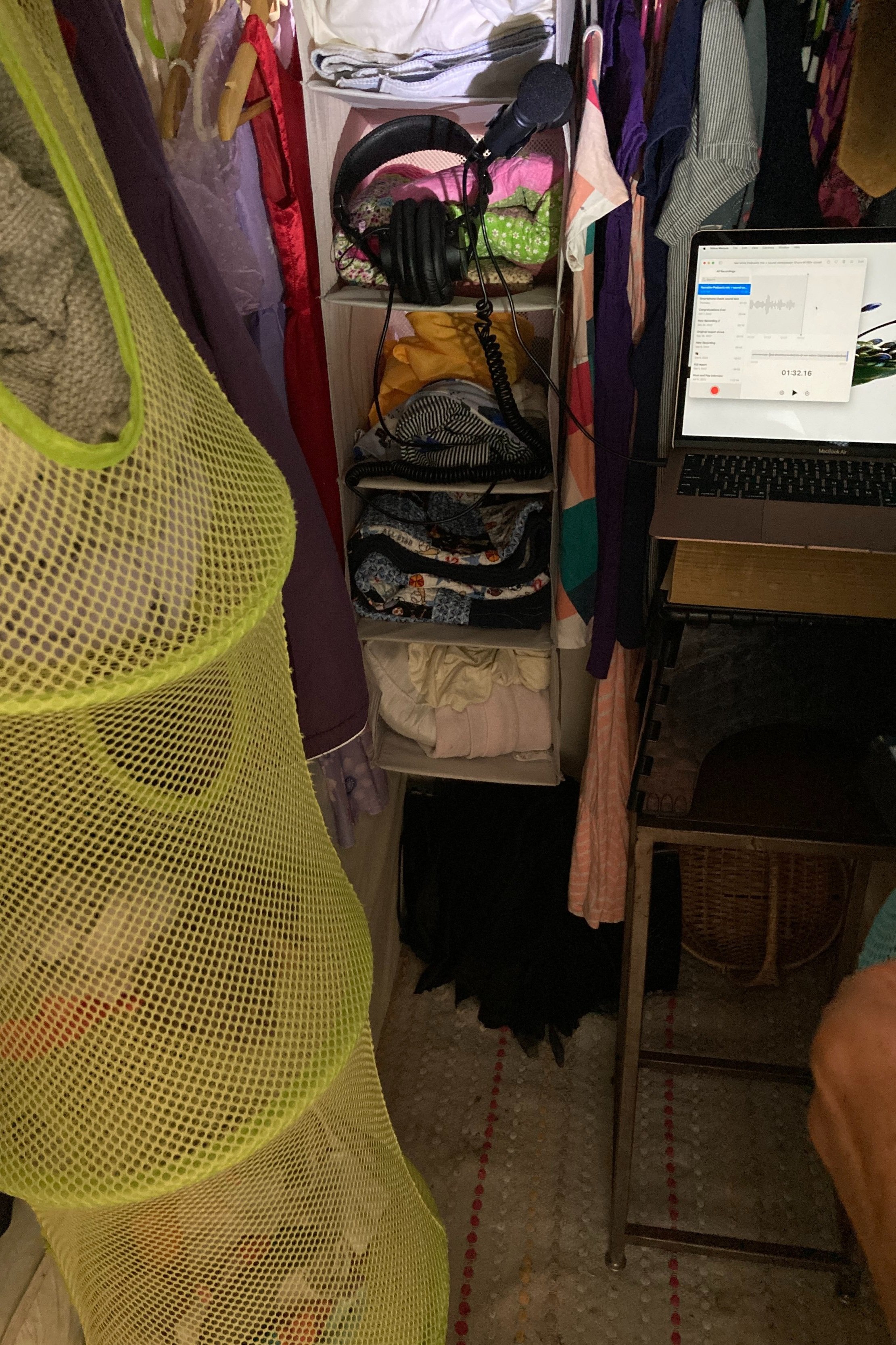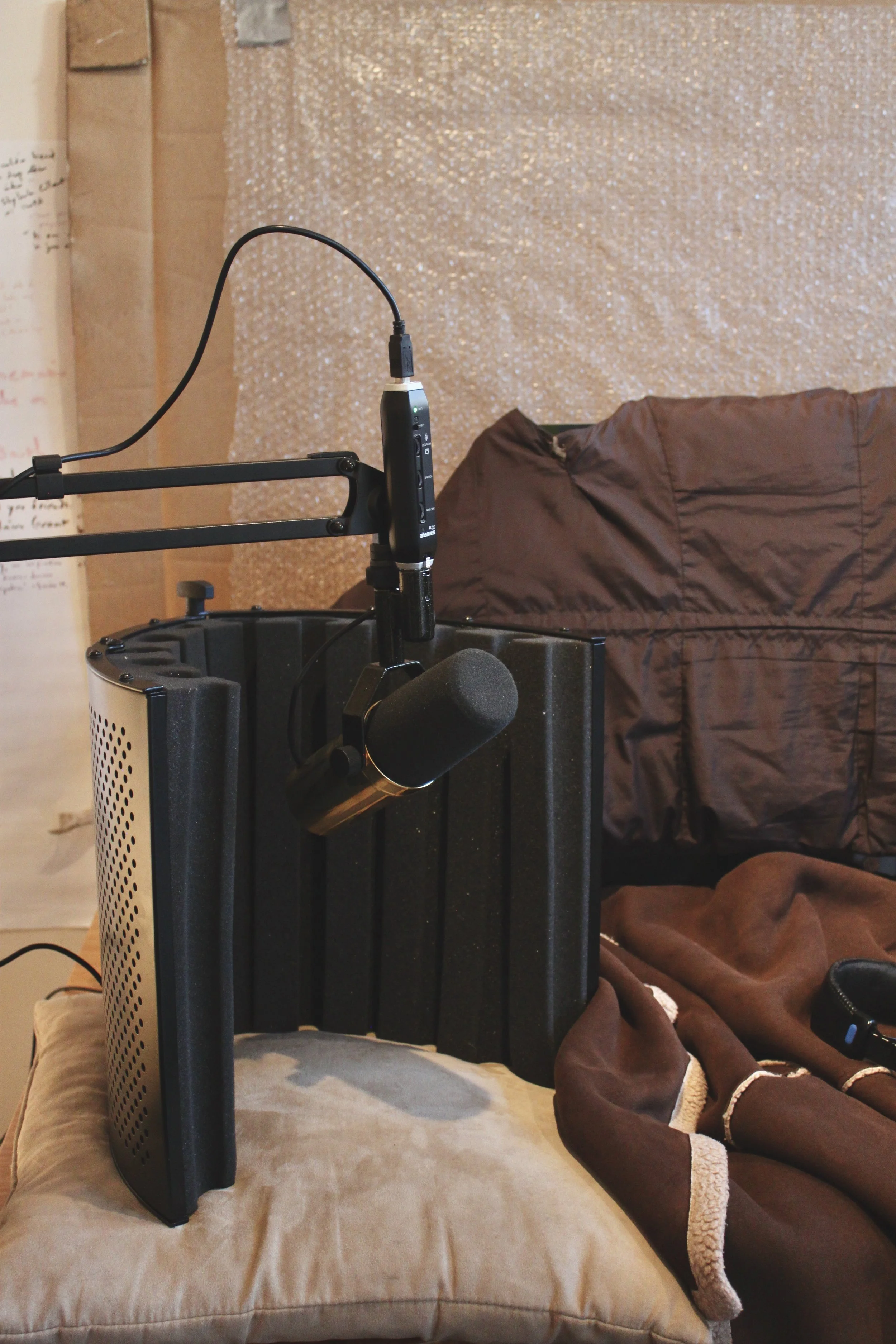Narrative Podcasts … mic + sound comparisons (with pictures!)
Wherever you are on your podcasting journey, it may be helpful to see and hear different home recording setups. A few notes:
Audio samples are arranged in sections by microphone, with worse on the left and better on the right.
You’ll hear some differences in my vocal quality (Nate) because I recorded these samples on different days, and at different times. As you develop your own voiceover practice, pay attention to when in the day you sound best!
Each audio sample has the Hindenburg noise reduction, default setting, just to remove the distracting background hiss, crackle, and reduce the mouth noises. (I also took out at a few long pauses here and there to save you a little boredom, but did not otherwise try to make myself sound awesome because the point it to let the mics and setups speak for themselves, not show awesome VO.)
Mic + setup comparison: built-ins (phone and laptop)
The first two are so obviously bad they’re not even worth considering for actual podcast recording, but as you’ll hear, a smartphone in a closet or under a blanket can be decent enough for getting interview clips or filling in voiceover in a pinch.
Absolute worst: the “zoom call simulator!” (Built-in laptop mic, no blanket fort or sound shield or anything.) Do you feel yourself instantly wanting to tune out? Just as good sound pulls us in, bad sound pushes us away. Probably the only worse scenario is the phone outside on a busy street on a windy day! File under “what not to do.”
Second worst: laptop under blanket. It’s a little better . . . but sounds like I’m talking through a blanket rather than under one! (By the way, this is an old photo just to show how the two blankets go over everything — in the early days Laura would record sitting down, before we learned that voiceover, just like singing, sounds better when you’re standing!
Best of the built-ins: smartphone in a closet. You can put the phone closer to head level, but not directly in front and too close or you’ll get more plosives. (You can read your script off your phone, or use a printout, but you get rustling or tapping.) Sound is kinda trebly and not too rich, but more intimate than the Blue Yeti with no blanket in the next section.
Mic + setup comparison: Blue Yeti
As you can hear, the Blue Yeti is a noticeable step up from the built-in mics, and again, this was the mic we used for the whole first season of Shelter in Place. We would say the takeaway here is that the mic matters — but with this level of mic, the environment matters more.
Podcasting step 1 ($130): Blue Yeti on stand, with throw pillow. It’s interesting to listen to this right after the smartphone in closet sample above: my voice sounds richer, but I also sound farther away, and again: perceived physical distance creates psychological distance.
Podcasting step 2 (~$300):. Blue Yeti with sound shield, shock mount, and boom arm. I would say this is baseline “I sound like a real podcaster” sound quality for doing a webinar, interview, or video. (But you will also hear the difference with the more expensive options that follow.)
Podcasting step 2b (~$300):. Blue Yeti with same accessories as the previous picture — but under the blanket fort. This was us for much of season two of Shelter in Place, including the several episodes that won or were nominated for awards. (Apologies I sound a bit stuffed up — but I sound close to you!)
Mic + setup comparison: Shure MV7
Shure MV7 + boom arm + sound shield (~$350). You can also see the window cover and vest over most of the external monitor for some additional damping. What’s interesting to me is that often with audio gear, bigger and heavier means better sound, but I think the MV88+ below sounds better than this one in the equivalent setups. To me the MV7 sounds more nasal.
Shure MV7 (with arm and sound shield) — inside the blanket fort! (Hence the bad image quality — smartphone flash. But for extra muffling, we put a pillow against our chest. Again, sound shield is on top of another pillow, and the script on the screen. The takeaway for me after listening to all these samples compared to each other is that spending $350 on gear (plus blanket or closet!) is what it takes to get that great, intimate sound.
Mic + setup comparison: Shure MV88+
Shure MV88+ outside ($250): Vocal quality is good, but ~8 inches was too close to my face (sorry!). Also as the sample shows, in outdoor settings you get a fair amount of ambient sounds (versus the MV7 and SM7B, which are a lot more focused with “on-axis sounds,” i.e. coming from straight in front.
Shure MV88+, desktop setup (~$350): To me, this one sounds slightly better than the Blue Yeti in the similar configuration, and is smaller and cheaper, so if portability and video are important to you, and you can afford the extra $120, I’d definitely get this over the Blue Yeti.
Shure MV88+ closet setup: Ugliest photo ever, but you get the idea: laptop on an end table (and stool, and dictionary), tripod holding mic on the shelf around neck height, and rug on the floor and clothes everywhere. The blanket fort still sounds slightly better — but this is more comfortable.
Shure MV88+, blanket fort setup: To me, this is the first sample where I listen and think “Wow, this person is speaking right into my ear, just to me.” This is the intimacy level that makes high-quality voiceover so powerful and can create such a feeling of connection between podcaster and listener.
Mic + setup comparison: Shure SM7b
SM7b no shield (~$550): As I note in the sample, the cheaper mics give you levels of acceptable-to-good sound in the closet or blanket fort, but this one is the only one that sounds good enough just like this that you could use it on webinars or video and still sound legit.
SM7b + accessories (~$600): It’s really interesting to compare this sample with the previous mics in the same configuration (mounted, no blanket). The others aren’t terrible like this — but there’s definitely more hint of echo or vibration, especially with the Blue Yeti.
SM7b no shield (~$550), closet setup: I’d say this is pretty darn close to the blanket fort level of audio intimacy, but a lot more comfortable. So if you have a closet with enough space to stand and put a laptop/iPad and your boom arm, this might be your answer.
SM7b + accessories + blanket (~$600): As I note in the recording sample, the other mics are pretty close in sound quality under the blanket fort, but this one is the only one that sounds good enough without that I’d want to use it on webinars or video.





